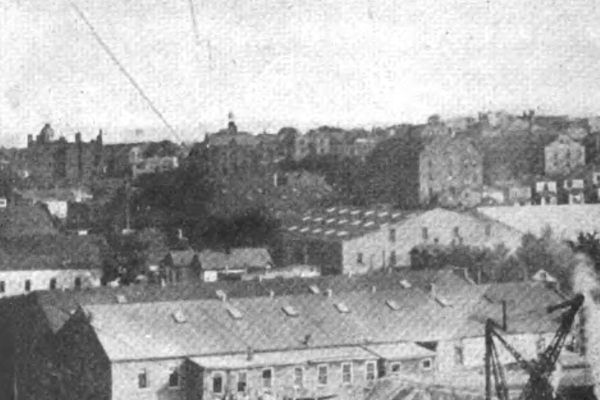When English colonist William Byrd arrived on a mission to establish the boundary between Virginia and North Carolina, he explored the area that would later become Danville. He claimed it was so beautiful that he felt he had wandered from “Dan to Beersheba;” a Biblical reference delineating the boundaries of the Tribes of Israel. From this, the river Dan received its name. Byrd went so far as to prophecy a future settlement, where people would live “with much comfort and Gaiety of Heart.”
Danville began as a meeting place for Revolutionary War veterans, who gathered on the shallows of the Dan River to fish and wax nostalgic about their war days. By 1792, these meetings had become an annual custom. When one of the men, William Wynn, decided to settle there permanently, the village of Wynn’s Falls was formed. A year later, a tobacco warehouse was constructed and the village was renamed Danville. It wasn’t until 1830, however, that a town charter was drawn up, but by the time the charter was issued, Danville had already outgrown its boundaries. The charter was rewritten and issued again in 1833.
The Dan River offered an early opportunity for industrial development. William T. Sutherlin, a local tobacconist, used the river’s water to power his tobacco presses; a pioneering advancement in the industry. Danville soon became known as the state’s largest market for bright leaf tobacco. Some claimed that Danville was home to the “World’s Best Tobacco Market” (hence the call letters of radio station WBTM).
Danville was also a major player in the textile industry. In 1882, six local business men founded Riverside Cotton Mills, later known as Dan River, Inc. For many years it was the largest single-unit textile mill in the world.
In addition to tobacco and textiles, Danville became a major railroad hub with lines running in all directions. Danville’s manufactured goods could easily be transported north, south, and to the coast for shipment overseas. In the late 19th and early 20th centuries, train travel to Florida usually required a stop in Danville.
Earlier, the Richmond and Danville Railroad played an important role in the Civil War, transporting Confederate troops – particularly the wounded – and delivering necessary supplies to General Lee’s army defending Richmond. With the imminent fall of the Confederate capital, the entire government, including President Jefferson Davis and his cabinet, fled to Danville on the same road.
During his ten days in Danville, President Davis stayed with his friend, William T. Sutherlin. From Sutherlin’s Main Street mansion, Davis wrote and issued his last Proclamation. He also held his last cabinet meeting nearby. The mansion is now known as “The Last Capitol of the Confederacy,” and is presently used as the Danville Museum of Fine Art and History.
